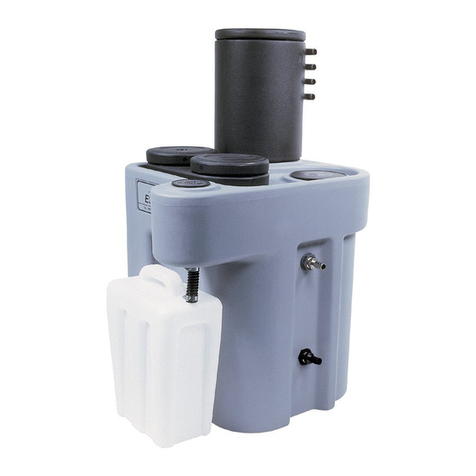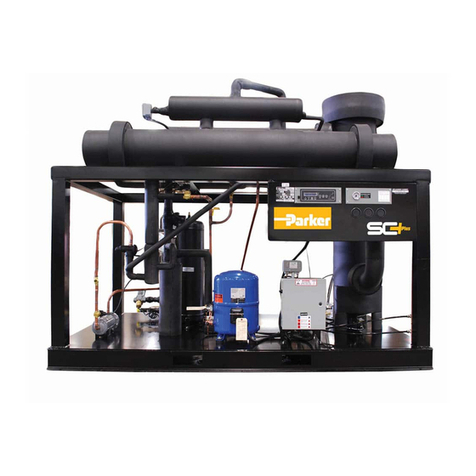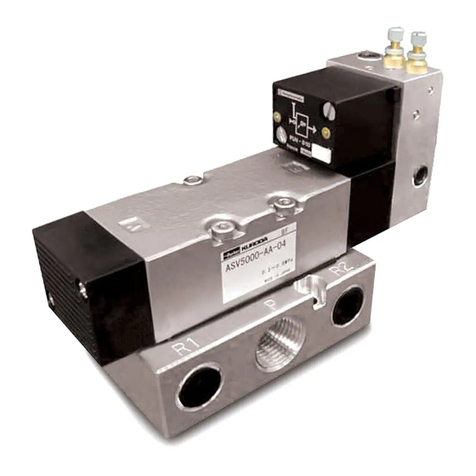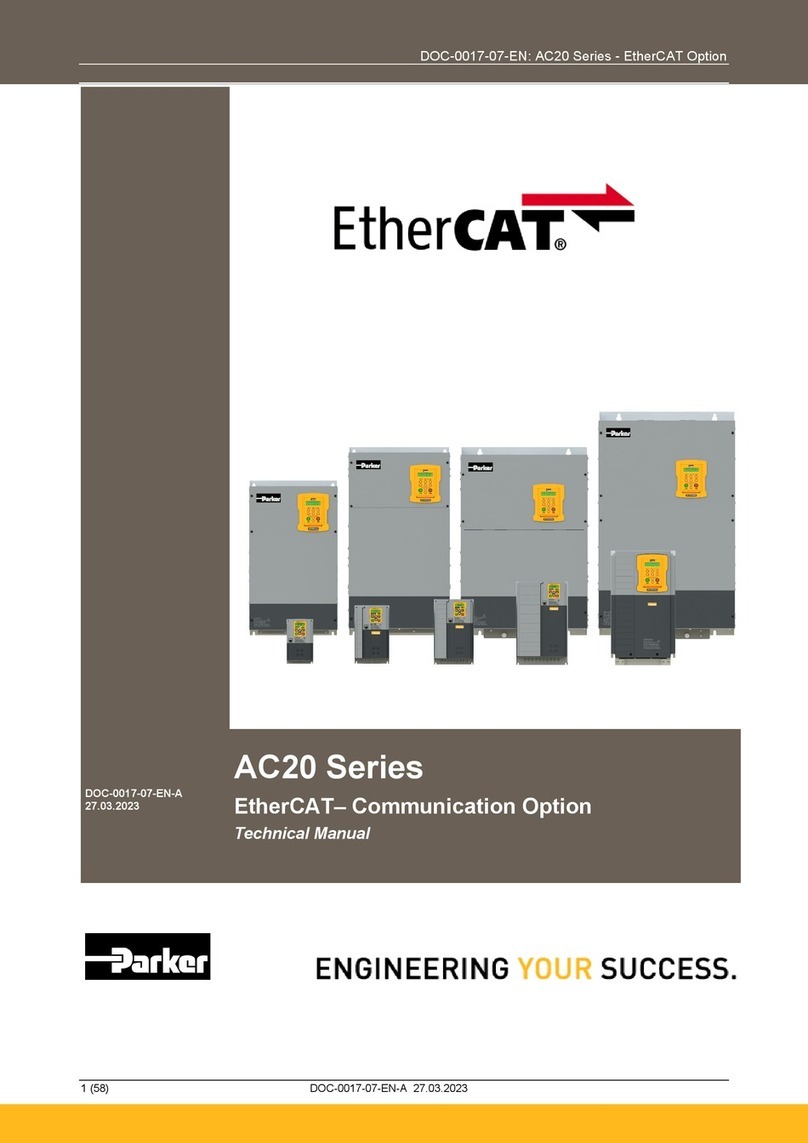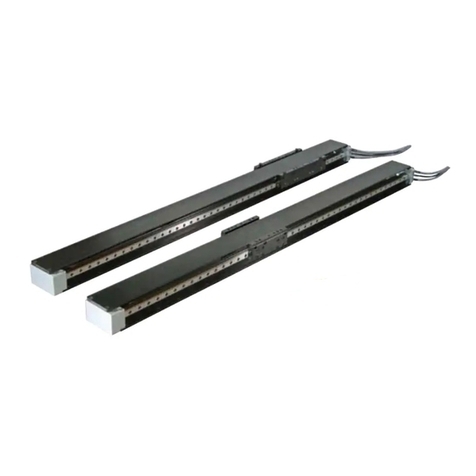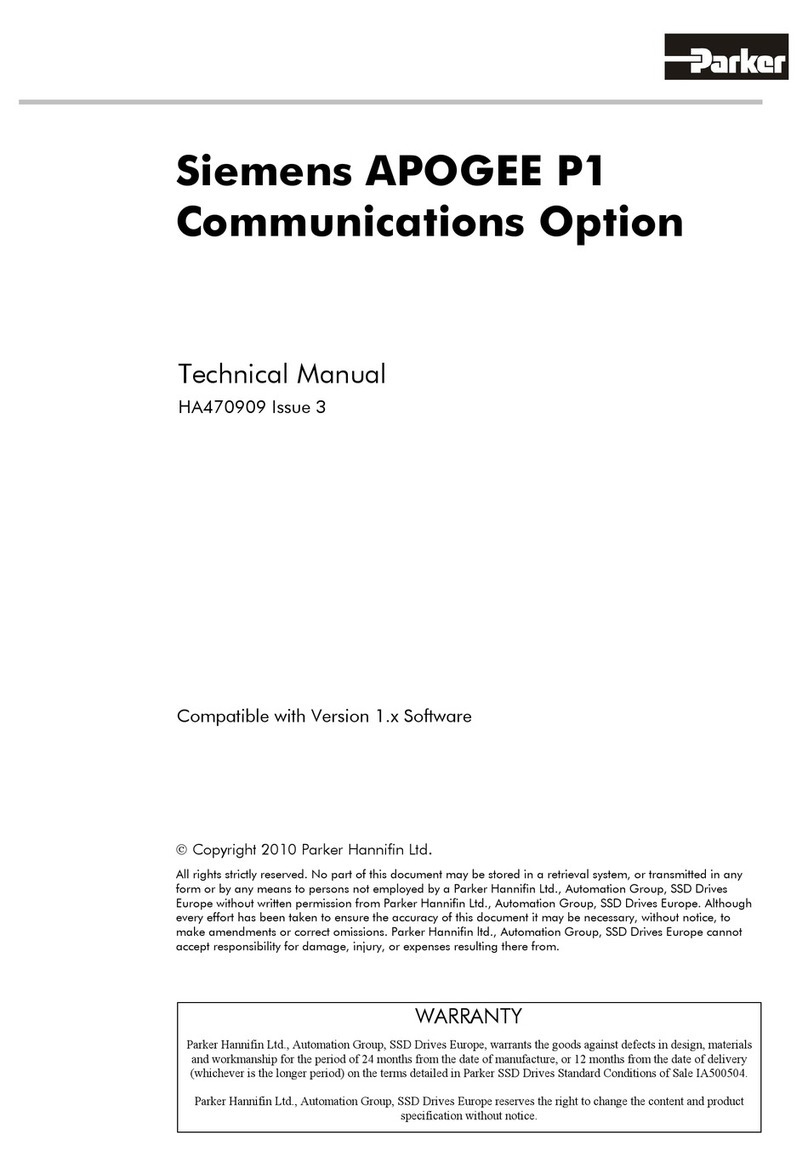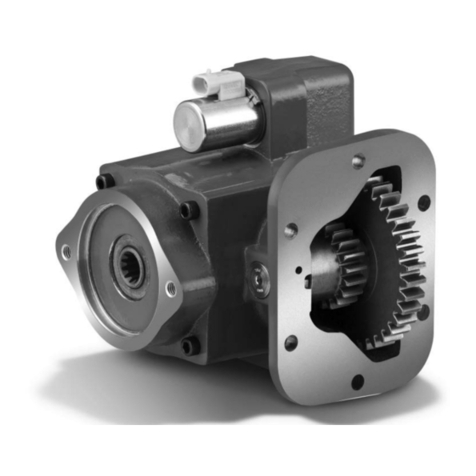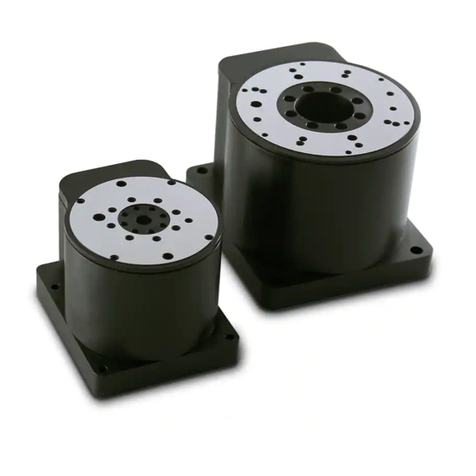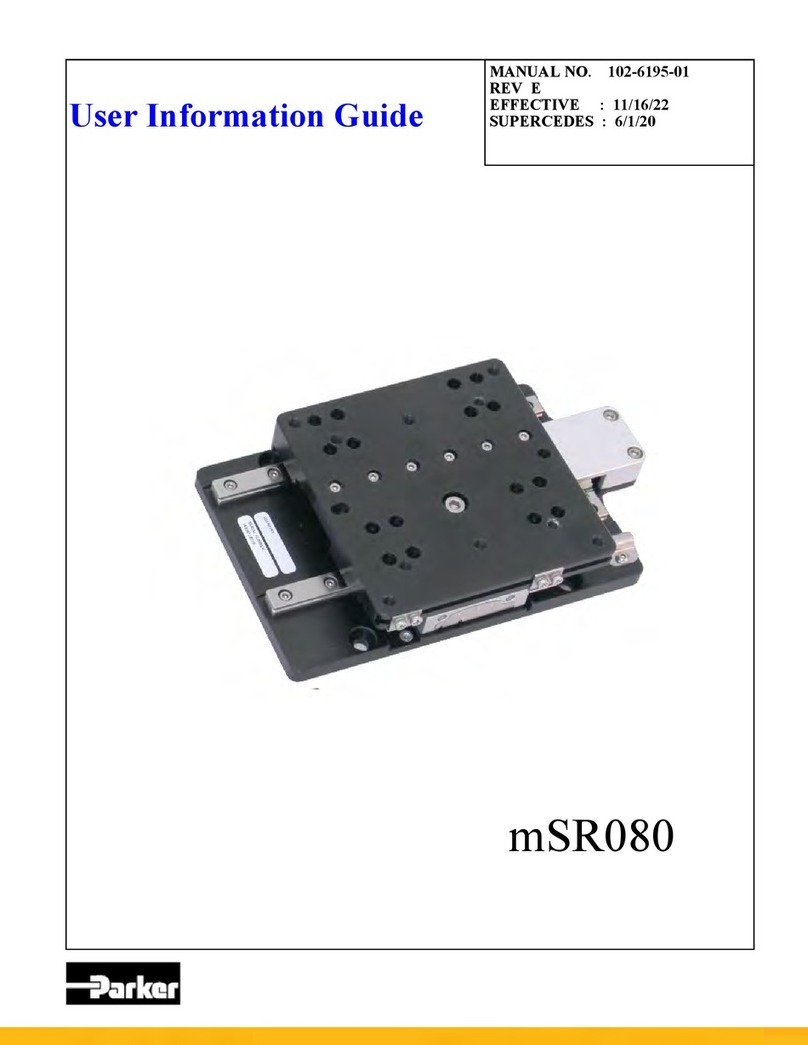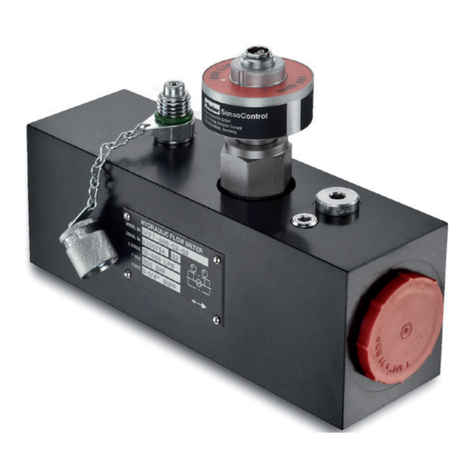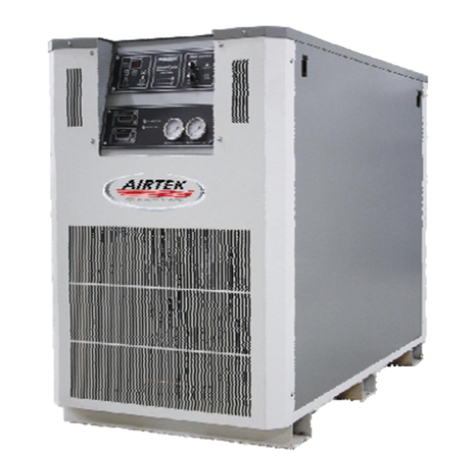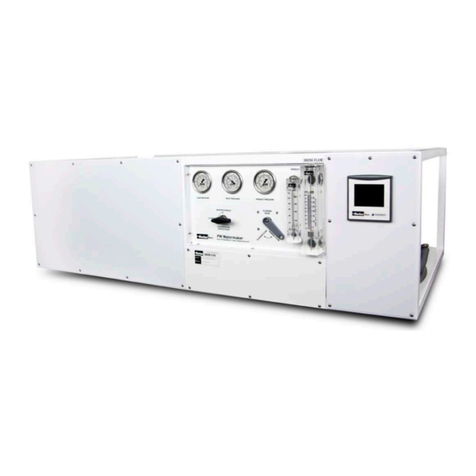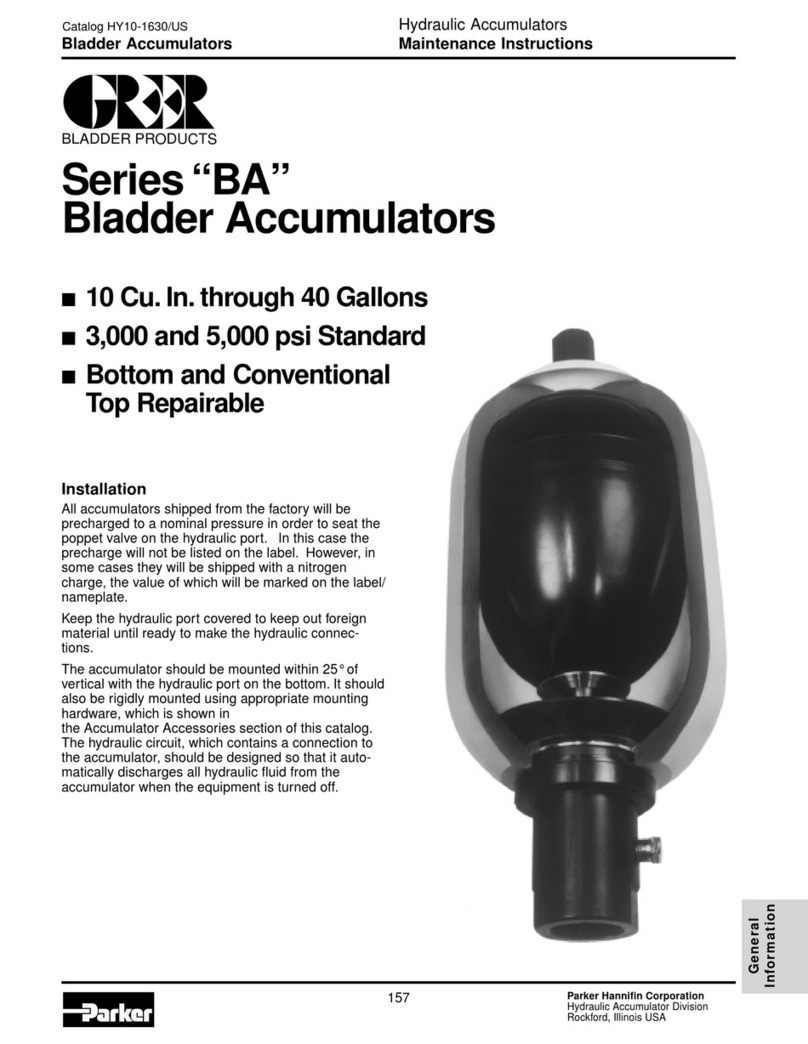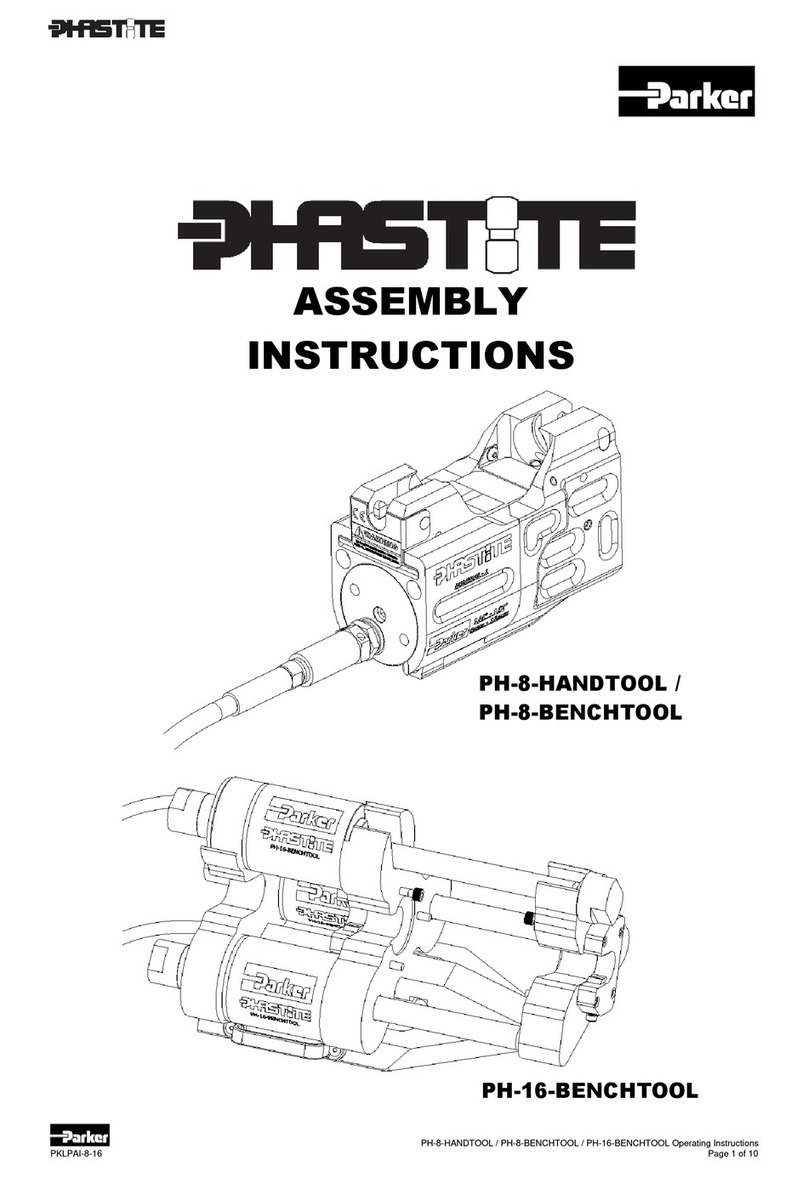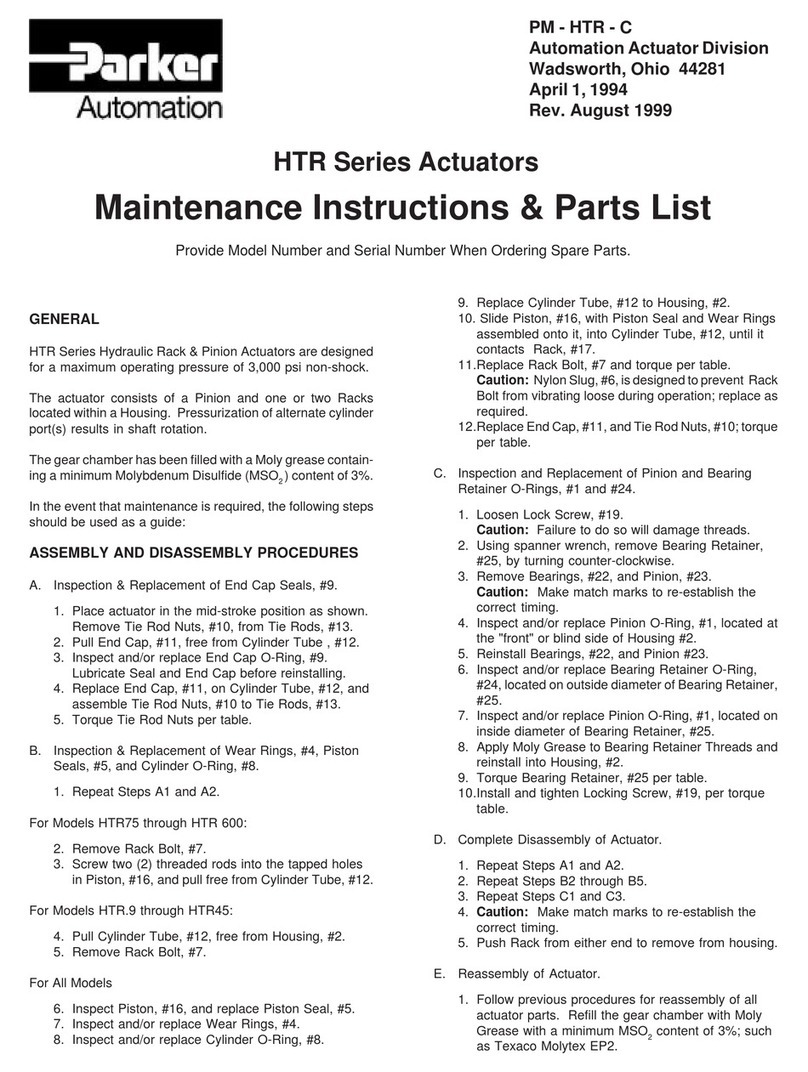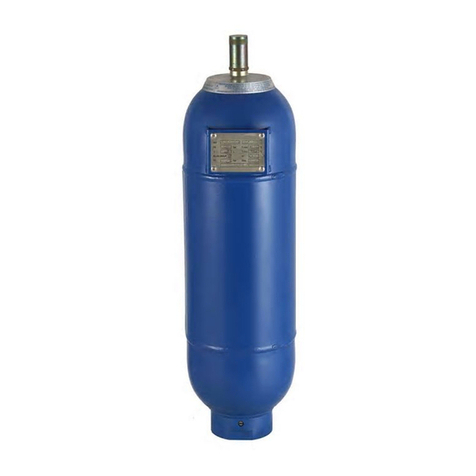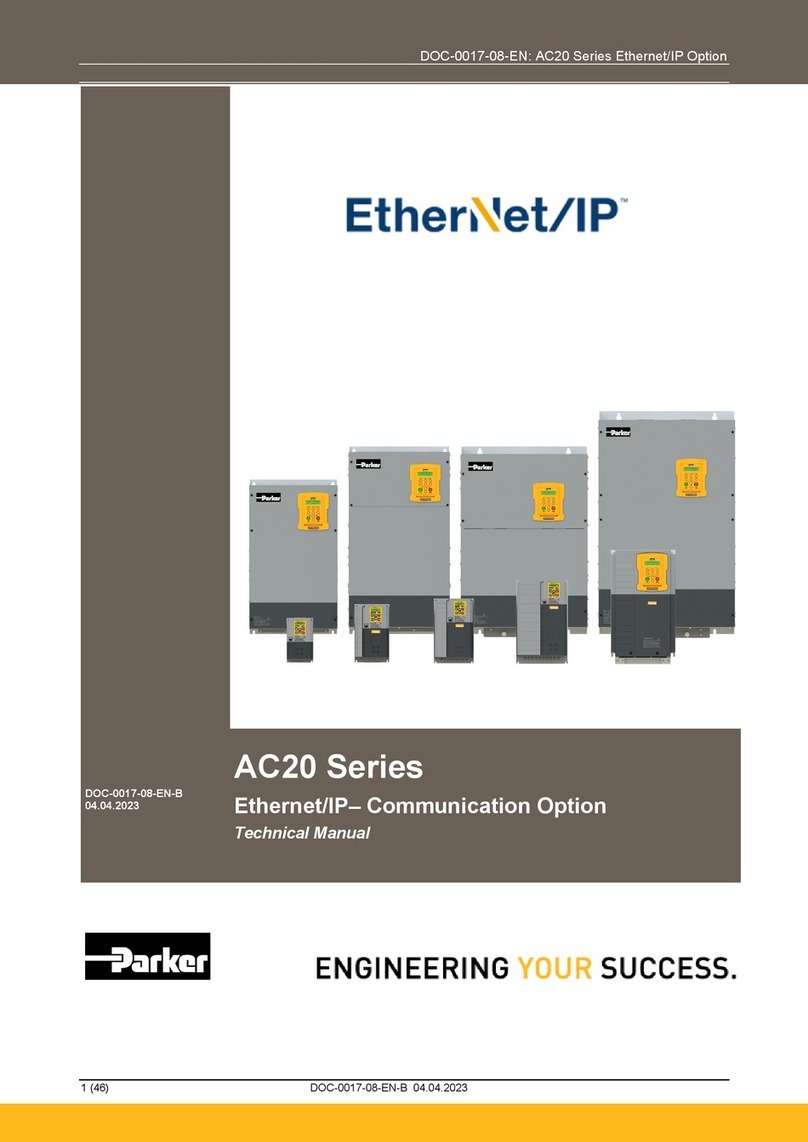
HY28-2600-550-M1/USA HY28-2600-550-M1/USA
Standard Hydraulic Power Units Installation and Maintenance Manual
D, H, V-Pak and Custom Power Units
Standard Hydraulic Power Units Installation and Maintenance Manual
D, H, V-Pak and Custom Power Units
9
8
Parker Hannin Corporation
Hydraulic Pump and Power Systems Division
United States
Parker Hannin Corporation
Hydraulic Pump and Power Systems Division
United States
Supply and Return Connections
Supply and Return Connections
Complete all necessary interconnecting piping
between the power unit and hydraulic actuators. The
line sizes should be determined based on oil ow,
operating pressure, viscosity and allowable pressure
drop between the power unit and point of use. The
exact connection details will depend on how the power
unit was ordered. If the unit was ordered with a PT
block, the top plate will have a block with a“P” and a
“T” stamped on it. The“P” is the pressure connection,
and the “T” is the tank or return connection. If the
unit was ordered with a manifold option, there will be
ports labeled “A” and “B.”These are connections that
normally go directly to the customer’s actuator ports.
The actuator is controlled by valves mounted on the
manifold. These valves could be supplied from the
factory or added by a third party or the customer.
WARNING:
Check to ensure that the proper rated hose or
pipe is used on pressure lines. It is the customer’s
responsibility to select the proper hose or tube
style to ensure safe and reliable performance.
Improper selection of the interconnecting plumbing
can cause serious injury or death. Make sure
you fully understand the requirements for a safe
installation or contact professional assistance.
Make sure vibration and thermal expansion are
considered. Straight tube runs should include
bends to accommodate thermal expansion and
contraction. If the power unit is mounted on a
separate base from the rest of the installation,
exible hose may be required to absorb possible
relative movement.
Important:
One of the key ingredients for good service and long
life from a hydraulic system is cleanliness. Since most
dirt inltrates a hydraulic system during installation,
Parker recommends the following:
1. All open ports on the power unit, cylinders,
etc. must remain plugged with tape or plastic
plugs until just before the hydraulic connections
are made.
2. All interconnecting tubing, pipe or hose should be
clean and free of rust, scale and dirt. The ends of
all connectors should be plugged until just before
they are to be installed in the system.
Start-Up Procedure
Start-Up Procedure
NOTE:
If the power unit has been provided with a variable
displacement pump (V-Pak), the pump case should
be lled with clean oil prior to priming. Located on the
power unit’s top plate, there is a port labeled “Pump
Case.” Remove the plug from this port, ll it with oil
and then replace the plug. See right:
Before proceeding to the rest of the start-up
procedure, wear proper personal protective
equipment. Safety glasses and gloves are the
minimum required items to avoid exposure and
injury from unexpected high-pressure oil leaks.
1. If the system has a standard solenoid controlled
unloading valve, it should be turned o to allow
the system to start up at minimum pressure. A few
special systems have a normally closed unloading
valve, in which case it should be energized to get
low pressure.
2. If the system has been provided with an open
center directional valve, the oil during start-up will
ow directly back to tank when neither solenoid is
energized. This should allow the system to prime
very quickly.
3. All openings in the reservoir such as the ller
breather or access end cover holes must remain
closed during installation.
4. If Teon tape or pipe dope is used, be sure it
doesn’t extend beyond the rst thread of the
pipe tting.
Reservoir Filling
The reservoir must be lled with clean uid through
the ller cap on the reservoir. The type of uid must be
compatible with the seals used on the power unit, and
must comply with the recommendations of the
manufacturers of the component parts. Refer to the
component manufacturer’s catalog for uid requirements.
The cleanliness of the uid going into the reservoir
is very important, and in most cases, even new oil out
of the drum is not adequate. We recommend that any
uid being transferred into the reservoir be done with a
transfer pump with a 10-micron lter installed. Various
Parker oil transfer pumps are available for this purpose.
Additionally, Parker sells pre-cleaned uid called
DuraCleanTM. This uid is clean from the drum and has
additives that resist moisture buildup, reducing varnish
and oxidation.
Cautions About Filling
Power units should be lled while they are not running,
especially if there is an accumulator in the system. If a
system has an accumulator and the oil level is“FULL”
when running, the oil level will likely overow when the
system is turned o.
After the initial ll, re-check the oil level after the
system has been in operation for a few cycles. In
some installations, the actuators and plumbing will
“consume”enough oil that the system will need
another ll to prevent it from running low during the
machine cycle.
Pressure lter manifold
Pressure gage w/ shuto
Relief valve (set higher
than pump compensator
Spare return w/ down
tube 3/4" NPT female
Return lter Temp/level
switch
Pump prell port
(8 to 15 GPM only)
Remote compensator
(set lower than main relief)
Filler breather
3. Fixed volume systems (D and H Paks) will have a
P to T open path if it is equipped with an unloading
option. On V Paks, the unloading option unloads
the pump compensator, not the main pressure line,
therefore additional work to prime the system may
be required.
4. Turn the main relief valve all the way down
(counter clockwise).
5. Jog the pump motor once, and verify that the
pump is rotating in the same direction as the
arrow tag on the motor fan cover. If the direction
is incorrect, reverse any two (2) of the three (3)
motor leads, and re-check the rotation. Most units
are right hand rotation, or clockwise looking down
at the motor fan. If the unit has a rear mount heat
exchanger, you may need to use a small piece
of thin wire or zip tie to“feel” which direction the
motor’s fan is turning.
6. Jog the pump/motor three (3) to six (6) times to
prime the pump and then allow the pump to run
for several minutes at minimum pressure. Check
the piping for any leaks and correct immediately.
(Leaks in ttings and tubing can be the result of
vibration during shipping.)
